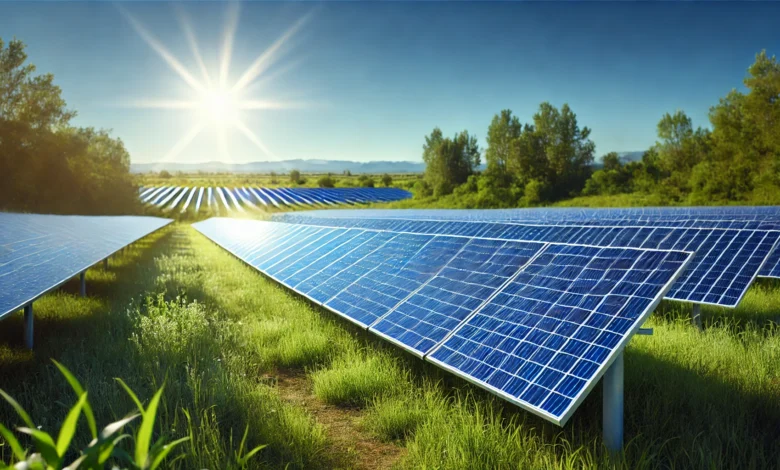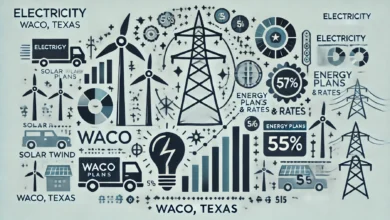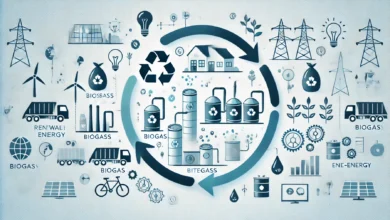Polycrystalline Solar Panels Features, Benefits and Costs

Solar energy systems have grown increasingly popular as a way to save money and carbon emissions. Among the solar panels that are available today, polycrystalline solar panels are one of the most popular solar panel options because they are low-cost and are also highly efficient. Understanding the characteristics, advantages and instalment price of polycrystalline solar panels will help you better decide if they will meet your energy needs for your home or commercial buildings.
Contents
- 1 What Are Polycrystalline Solar Panels?
- 2 Advantages of Polycrystalline Solar Panels
- 3 Pros & Cons of Polycrystalline Solar Panels
- 4 Price of Polycrystalline Solar Panels in 2025
- 5 Comparing Polycrystalline Panels to Other Options
- 6 Best Scenarios for Polycrystalline Solar Panels
- 7 Are Polycrystalline Solar Panels Right for You?
- 8 Frequently Asked Questions (FAQ)
- 8.1 Are polycrystalline solar panels less durable than monocrystalline?
- 8.2 Do polycrystalline solar panels work in low light conditions?
- 8.3 Is the cost differential significant between monocrystalline and polycrystalline panels?
- 8.4 Can polycrystalline panels power an entire home?
- 8.5 Do polycrystalline panels require more maintenance?
What Are Polycrystalline Solar Panels?
Polycrystalline solar panels are made from a number of silicon crystals melted together. They differ from monocrystalline solar panels that are made from a single crystal structure which give a smooth and functional aesthetic. The surface of the polycrystalline solar panels appears speckled, as it is made of melting a bunch of different crystals together.
- They are made by pouring molten silicon into a square mold, and cutting into a perfect square wafer. This a cheaper production method, as there is less waste material in the production time.
- The common characteristic color of the polycrystalline solar panel is its blue color with speckled variations.
Keen to learn about the differences? You may want to take a look at our guide on Monocrystalline Solar Panels.
Advantages of Polycrystalline Solar Panels
1. Efficiency:
Typically, polycrystalline panels have an efficiency rate of 15%-17%. Although they are less efficient than other type of solar panels they provide reliable power generation which is enough for most residential or commercial applications.
2. Durability:
Like any solar panel made with silicon, polycrystalline solar panels are very durable. Most come with a warranty of 25 years or longer, making them a long-term energy solution.
3. Sensitivity to Temperature:
Polycrystalline panels have a slightly higher temperature coefficient than monocrystalline panels, meaning as the temperature ramps up, their performance declines a little bit more than monocrystalline.
4. Looks:
Polycrystalline panels are blue and have a speckled, mosaic appearance because they contain multiple silicon crystals.
Pros & Cons of Polycrystalline Solar Panels
Advantages:
- Cost-effective: Since the production is less complicated and involves the use of less waste, polycrystalline panels are typically less expensive than monocrystalline panels.
- Less Waste: Polycrystalline panels have a lower environmental impact than monocrystalline panels since there is less waste in production.
- Performance: Decades of actual use have proven that polycrystalline panels are effective and perform in whatever climate you find yourself in.
- Overall Value: For homeowners or businesses looking for an overall balance between performance and price, polycrystalline panels often provide excellent overall value.
If you are also interested in learning about other more cost-effective solar panel options, read about Thin-Film Solar Panels.
Price of Polycrystalline Solar Panels in 2025
| System Size | Average Installed Cost (after incentives) |
|---|---|
| 4 kW | $7,800 – $9,200 |
| 6 kW | $11,000 – $13,500 |
| 8 kW | $14,500 – $17,800 |
| 10 kW | $18,500 – $21,500 |
These prices will vary based on:
- Location and amount of sun exposure
- Installer and permitting fees
- Complexity of the system and roof structure
- Incentives and rebates available locally
Comparing Polycrystalline Panels to Other Options
| Panel Type | Efficiency | Cost | Best For |
|---|---|---|---|
| Polycrystalline | 15% – 17% | Lower | Budget-focused homeowners |
| Monocrystalline | 18% – 22% | Higher | Maximum efficiency given limited space |
| Thin-Film | 10% – 13% | Varies (depends on type) | Lightweight or flexible installations |
Best Scenarios for Polycrystalline Solar Panels
- Homes and businesses that have more roof or ground space.
- Projects that care more about cost efficient (money spent per output produced), than maximal performance.
- Large solar farms where the installation budget is a main concern.
Are Polycrystalline Solar Panels Right for You?
Choosing your solar panels is about balancing your budget, space, and energy needs.
- If you are limited in roof space and desire the highest efficiency, then monocrystalline panels would be the better option.
- However, if you have more available space and prefer a lower upfront investment, then polycrystalline panels would provide excellent value and long-term savings.
If you are a typical average homeowner looking for an economical way into solar, polycrystalline will remain a practical, accessible option in 2025.
Frequently Asked Questions (FAQ)
Are polycrystalline solar panels less durable than monocrystalline?
No. Both are very durable, and on average may provide similar warranties of 25 years or more.
Do polycrystalline solar panels work in low light conditions?
Polycrystalline panels work well, but monocrystalline panels tend to outperform theirs in cloudy or low-light environments.
Is the cost differential significant between monocrystalline and polycrystalline panels?
Yes, although prices continue to fall polycrystalline panels are typically 10-20% cheaper than monocrystalline panels.
Can polycrystalline panels power an entire home?
Sure. The key is designing a system that meets the energy needs of your home (regardless of the panel type).
Do polycrystalline panels require more maintenance?
No. You will have the same maintenance schedule (to occasionally clean) irrespective of panel type.



